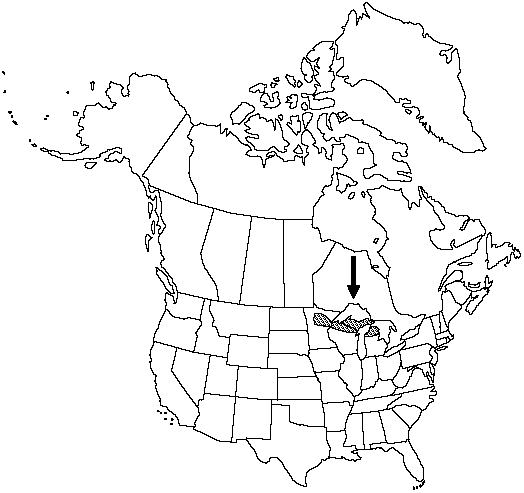Botrychium mormo
Amer. Fern J. 71: 26. 1981.
Trophophore stalk 0.2–2.5 cm, usually 0.3–0.6 times length of trophophore rachis; blade yellow-green to green, shiny, linear to linear-spatulate, lobed (rarely 1-pinnate), to 5 × 1 cm, very succulent. Pinnae or lobes to 3 pairs, ascending, mostly widely separated, usually fused together in distal half of trophophore, distance between 1st and 2d pinnae not or slightly more than between 2d and 3d pairs, extremely variable in outline, linear to fan-shaped, undivided to tip, margins entire to coarsely dentate, proximal pinnae or blade tip not dentate or with 2–3 shallow, broad teeth, apex angular, venation like ribs of fan, midrib absent. Sporophores 1-pinnate, 0.2–3 cm, 0.2–3.5 times length of trophophore. 2n =90.
Phenology: Leaves appearing in late spring to fall.
Habitat: Extremely sporadic, in rich northern basswood, beech, sugar maple forest
Elevation: 300–600 m
Distribution

Mich., Minn., Wis.
Discussion
The highly seasonal appearance of Botrychium mormo is more like a fungus carpophore than a moonwort. In wet years both mature and juvenile plants are fairly easy to find in known localities; in dry years they do not appear aboveground. Botrychium mormo may be eaten and dispersed by animals. The succulent nature of the whole plant may make it attractive to herbivores, and because the sporangia do not open, passage through animal digestive tracts may be required to facilitate the release of the spores. Another unusual feature of B. mormo is the tendency for gametophytes to persist on mature sporophytes.
Of conservation concern.
Selected References
None.
Lower Taxa
"broad" is not a number.